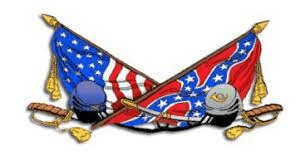Battle of Shiloh

Battle of Shiloh, also called the Battle of Pittsburg Landing. The name Shiloh was taken from that of a meetinghouse, 5 km (3 mi) from Pittsburg Landing, that is on the Tennessee River, 14 km (9 mi) north of Savannah, Tennessee. Here on April 6, 1862, a Confederate army of 40,000 men under General Albert S. Johnston surprised and attacked a Union army of 45,000 men under General Ulysses S. Grant. During the battle, which lasted from dawn to dusk and was one of the most desperate of the war, the Union troops were steadily driven back, but Johnston was killed, and his successor, General Pierre G. T. Beauregard, ordered operations suspended a few hours later. The following day Grant, with 25,000 reinforcements under General Don Carlos Buell, attacked the Confederates and forced them to withdraw to Corinth, Mississippi. Thus, Grant regained all the ground he had lost, and the two-day battle ended without a conclusive victory for either side. Casualties numbered more than 10,000 in each army. A national military park and cemetery commemorating the battle are located at Shiloh.
After taking Fort Donelson, Grant had wanted to move on the Confederate base in Corinth, Mississippi, where Albert Sidney Johnston, the Confederate commander in the West, was known to be assembling troops. Grant was ordered to delay his advance until Union General Don Carlos Buell, who had been operating in East Tennessee, could join him.
Early on Sunday, April 6, 1862, Johnston’s army, which had come up to the federal lines undetected, struck Grant’s army, which was encamped at Pittsburg Landing on the Tennessee River. The Battle of Shiloh followed. At the end of the second day of fighting the Union forces drove back the attackers. Shocking losses, 13,000 out of more than 62,000 Federals and 10,700 out of 40,000 Confederates, appalled both sections of the country. Although victorious, Grant was accused of lacking elementary caution and found himself reviled in the North. The South mourned the loss of Johnston, one of its ablest commanders, who was shot and bled to death.
On April 6, Confederate forces attacked Union forces under General Ulysses S. Grant at Shiloh, Tennessee. By the end of the day, the federal troops were almost defeated. Yet, during the night, reinforcements arrived, and by the next morning the Union commanded the field. When Confederate forces retreated, the exhausted federal forces did not follow. Casualties were heavy — 13,000 out of 63,000 Union soldiers died, and 11,000 of 40,000 Confederate troops were killed.


